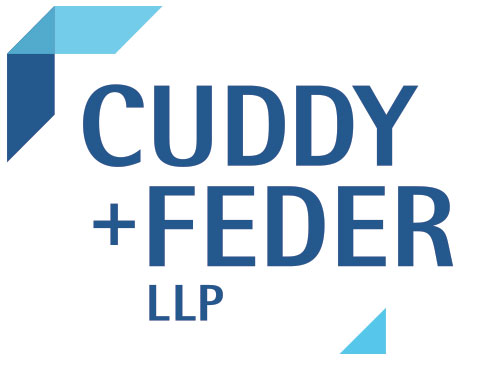
I. Mortgage Recording Tax
New York State imposes an excise tax on the privilege of recording a mortgage. Known simply as the “mortgage recording tax,” the tax actually consists of several distinct taxes with rates ranging from $0.25 to $1.75 for each $100 of principal indebtedness secured, of which at any time may become secured, by the mortgage. The total tax rate for any given mortgage depends upon which, and how many, of these taxes apply in the county where the property is located.
Of the various taxes that together constitute the mortgage recording tax, there are three that apply almost universally: (i) the basic tax of $0.50 for each $100 of indebtedness, imposed by section 253(1) of the Tax Law; (ii) the special additional tax of $0.25 for each $100 of indebtedness, imposed by section 253(1-a)(a) of the Tax Law; and (iii) the additional tax of $0.25 ($0.30 if the property is located within the metropolitan commuter transportation district) for each $100 of indebtedness, subject to a $10,000 deduction for residential properties, imposed by section 253(2)(a) of the Tax Law (the “metropolitan commuter transportation district” includes New York City and the counties of Dutchess, Nassau, Orange, Putnam, Rockland, Suffolk and Westchester).
In addition to these three taxes are those imposed by local governments, specific to the county or, where applicable, city in which the mortgaged property is located. For example, Westchester County imposes an additional tax of $0.25 for each $100 of indebtedness pursuant to section 253-g of the Tax Law. Accordingly, the total mortgage recording tax in Westchester is $1.30 for each $100 of indebtedness, or 1.3%. In New York City, the additional tax is 1% to 1.75% depending on the property type and mortgage amount, resulting in a total mortgage recording tax of 2.05% to 2.80%, the highest in the state.
II. The Quarter Point
Of the various taxes that constitute the mortgage recording tax, only the special additional tax imposed by section 253(1-a)(a) of the Tax Law, commonly referred to as the “quarter point,” must be paid by a particular party. Specifically, section 253(1-a)(a) provides that the special additional tax is payable by the mortgagee in cases where the property covered by the mortgage is “principally improved or to be improved by one or more structures containing in the aggregate not more than six residential dwelling units, each dwelling unit having its own separate cooking facilities.” The section goes on to state that, subject to certain exceptions, “such tax shall not be paid or payable, directly or indirectly, by the mortgagor” if the mortgaged property is as described above. In other words, unless an exception applies, the quarter point must be paid by the lender where the mortgage encumbers a residential property with six units or less.
So, what are the exceptions?
1. Statutory Exceptions
a. Payment to Facilitate Release:
Section 258 of the Tax Law provides that a mortgage shall not be recorded unless the required mortgage recording tax is paid. Similarly, section 258 provides that a mortgage which is subject to the tax shall not be, among other things, released, discharged of record, modified or extended unless such tax is paid. If, for example, a mortgage is mistakenly recorded without collection of recording tax, or if it is later determined that a greater tax was due than was actually collected, such amount must be paid in order to compel the county clerk to record a satisfaction or assignment of the mortgage, even if the appropriate instrument of satisfaction or assignment is successfully tendered and all other requirements have been satisfied. To account for scenarios in which the portion of the recording tax due is the special additional tax payable by the lender, Section 258 provides that a mortgagor may bypass the lender and pay the special additional tax directly to obtain a release or discharge of record and then either apply for a credit or maintain an action against the party responsible for such payment.
b. Trust Mortgages:
When a mortgage is made by a corporate trust to secure payment of bonds or other obligations and, at the time the mortgage is recorded, the principal indebtedness which is or may become secured by such mortgage has not been fully advanced, the mortgage tax payable at that time is based only on the amount of the initial advance, provided that amount, among other things, is stated at the end of the mortgage document (Tax Law section 259). This allows the trust, as borrower, to postpone payment of the recording tax and to ensure that such tax is paid only on the total amount actually advanced. However, balancing this privilege is the requirement that, after the recording of the mortgage, the recording tax due in connection with any subsequent advance, including the special additional tax that would otherwise be payable by the bondholders or other mortgagees, is payable by the borrower.
c. Non-Profits:
253(1-a)(b) provides that a non-profit organization exempt from federal income taxation pursuant to subsection (a) of Section 501 of the internal revenue code is exempt from the special additional tax. The exemption applies both to mortgagees and mortgagors. Where the mortgagee is exempt as a qualifying non-profit under this section, the mortgagor is obligated to pay the tax. Where the mortgagor is exempt, mortgagee must pay the tax. Where both the mortgagor and mortgagee are qualifying non-profits, the mortgage is exempt from the special additional tax altogether.
2. Case Law
Federal Savings and Loan Associations:
In Dime Savings Bank of New York, FSB, v. The State of New York, 174 AD2d 173 (2nd Dept. 1992), the Appellate Division, Second Department, held that the anti-pass through provision in Section 253(1-a)(a) conflicts with a federal regulation (12 CFR 545.32 (b)(5)), which permits federal savings institutions to require the borrower “to pay necessary initial charges connected with making a loan, including the actual costs of title examination, appraisal, credit report, survey, drawing of papers, loan closing and other necessary incidental services and costs.” Therefore, the Court concluded, section 253(1–a)(a), insofar as it prohibits the lender from passing the cost of the recording tax on to the borrower, is unenforceable as against federal savings and loan associations. Accordingly, federal banks are entitled to require the borrower to pay the special additional tax that would, under section 253, otherwise be payable by the lender.
III. In Practice
The rule stated in section 253(1)(a) seems straightforward: if the mortgage secures a residential property with six units or less, each with its own cooking facilities, the lender must pay the quarter point, subject only to a limited set of exceptions, as set forth above. Nevertheless, it is not uncommon for the quarter point, and the responsibility to pay it, to become a point of discussion during certain types of mortgage loan transactions. Sometimes, this is the result of the lender’s unfamiliarity with this rule and other times the borrower’s. For example, a bank, or a particular bank office, may generally issue loans secured only by commercial properties or properties outside of New York State. On the other hand, a borrower may be investing in a commercial property for the first time, having only had experience investing in one to six family residential properties in the past. In either of these examples, the allocation of the special additional tax may come as a surprise to one or both parties. There are also instances in which the parties are generally aware of the rule but unsure of its application given the nature of the transaction – for example, a commercial loan secured by a single-family residence. In the eyes of the bank issuing such a loan, the property is an investment and the loan is evaluated and papered accordingly. So, why, the bank may ask, should the mortgage recording tax be treated any differently? Why should the bank have to pay the quarter point on a commercial loan? The answer is because the law is based on the type of property, not the type of loan. If the collateral is a residential property with six or less units, the bank is obligated to pay the quarter point.
Of course, there are ways for lenders to pass the tax on to borrowers or other parties – for example, by increasing fees to offset the anticipated tax or openly requesting that the borrower or another party pay the tax. No matter the particulars, however, any such arrangement is impermissible under section 253(1)(a). While it is unlikely that the recording of the mortgage would be jeopardized as a result, assuming the full mortgage recording tax is paid, the lender’s obligation with respect to the tax survives the recording of the mortgage. In State v. Intercounty Mortgagee Corp., 87 AD2d 748 (1st Dept. 1982), the court required lenders who had passed the cost of the tax on to sellers to make restitution to those sellers in the amount of the tax improperly collected from them. In so doing, the court stated: “[T]he fair interpretation of Tax Law § 253 subd. 1–a(a) is that the special additional mortgage recording tax with respect to such improved real property must be paid by the lender and cannot be passed on to the seller, real estate broker or other third person. Nor do we think that this statutory provision denies these mortgagees the equal protection of the laws, or is invalid under the supremacy clause of the United States Constitution.”
It is important for all parties to any New York mortgage loan transaction to be aware of their respective recording tax obligations, including the quarter point, and to get it right. In the end, it is to the benefit of both the borrower and lender (not to mention sellers and other parties who might otherwise agree to pay the tax) to ensure that the tax is paid in accordance with the Tax Law. For the borrower, the recording tax often constitutes a substantial portion of closing costs. Simply paying attention to the amount and allocation of the tax can create opportunities for cost savings. If the borrower is entitled to an exemption, the opportunity is even greater. For lenders, strict compliance with the Tax Law can eliminate the risk of future liability for misallocated recording tax. Whether by paying the quarter point or, in certain cases (for example, where the borrower is exempt) paying the entire recording tax, lenders can ensure they will not be ordered to make restitution or face other penalties down the road in connection with their recording tax obligations.
The experienced Real Estate team at Cuddy & Feder are available to help you in a variety of real estate transactions, both commercial and residential. Founded on the strength of our real estate practice, the firm has played a key role in shaping the real estate landscape throughout Westchester, Fairfield, Long Island and the Hudson Valley.
